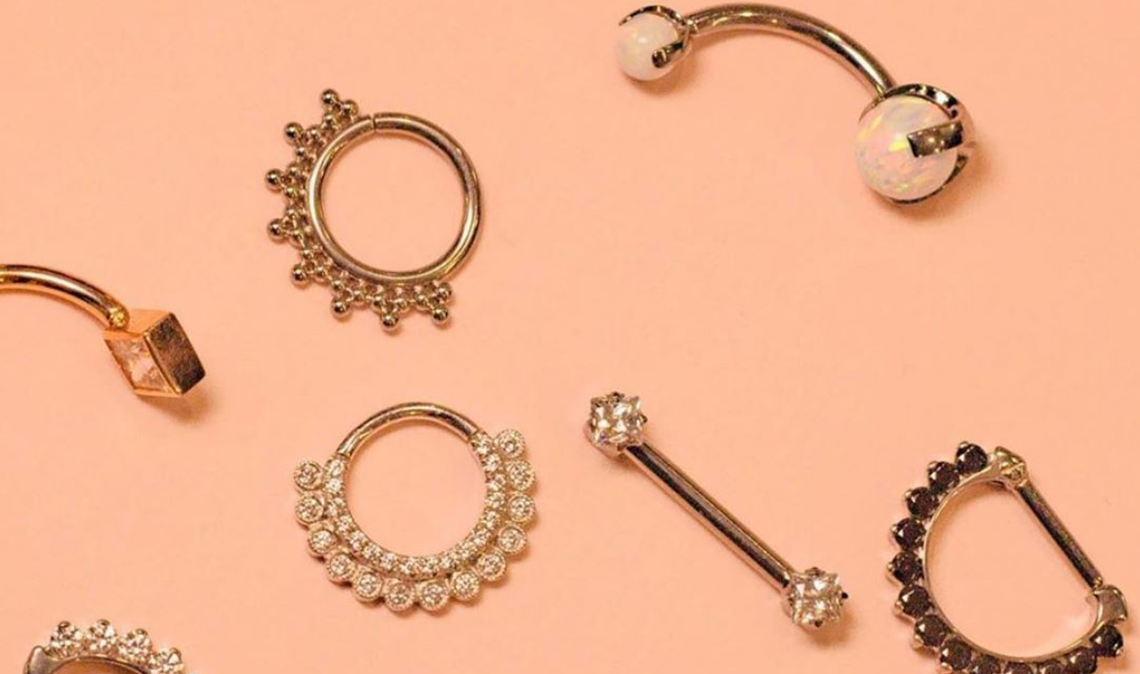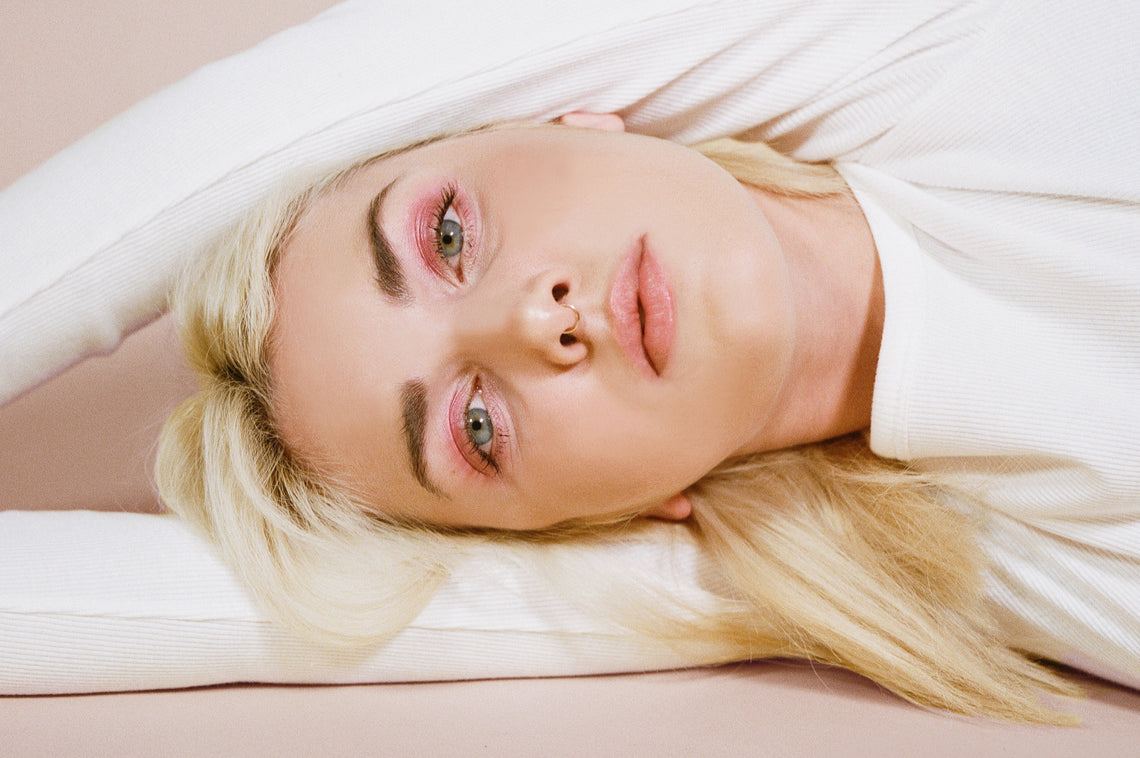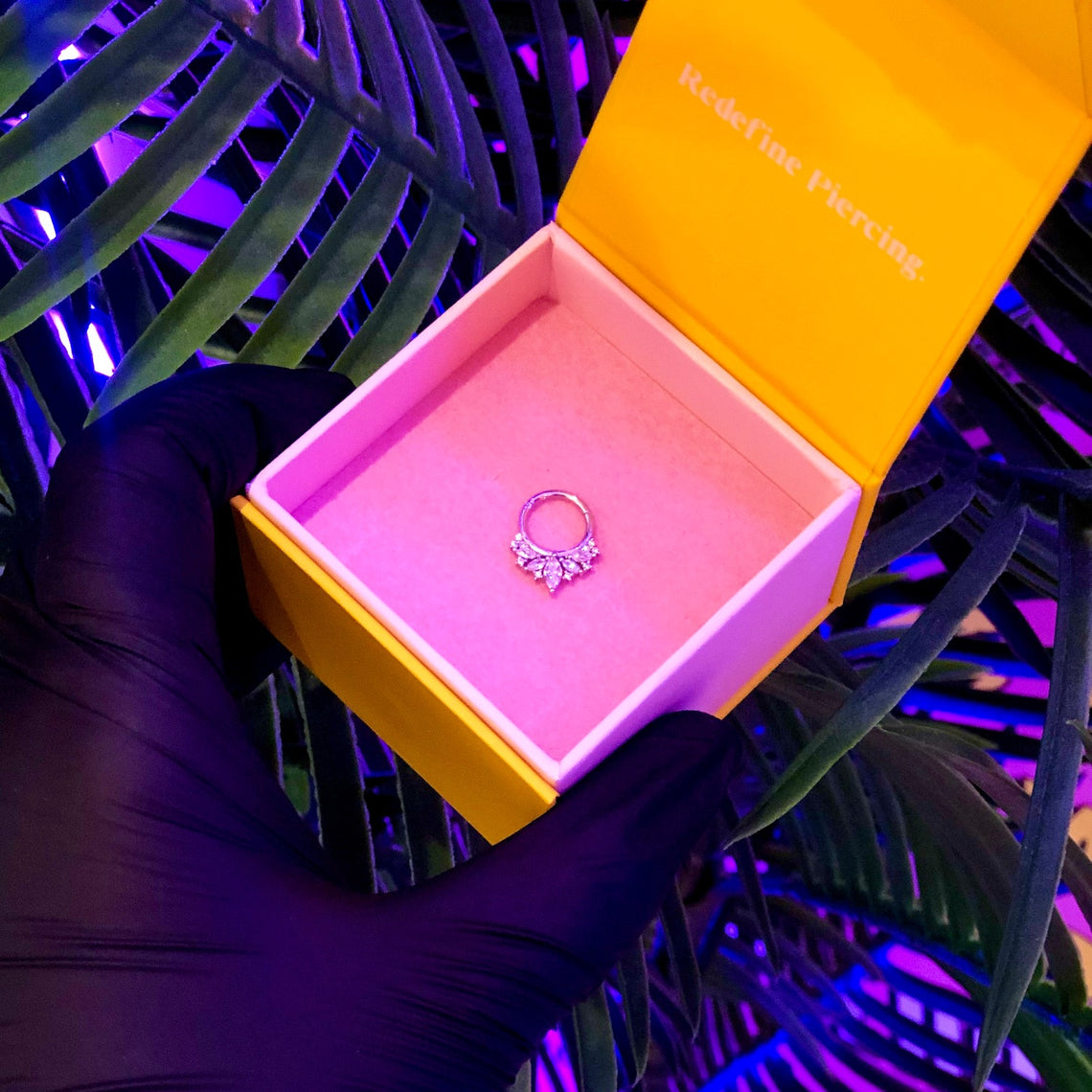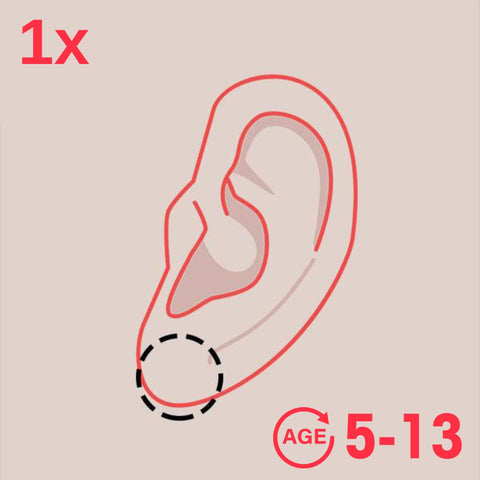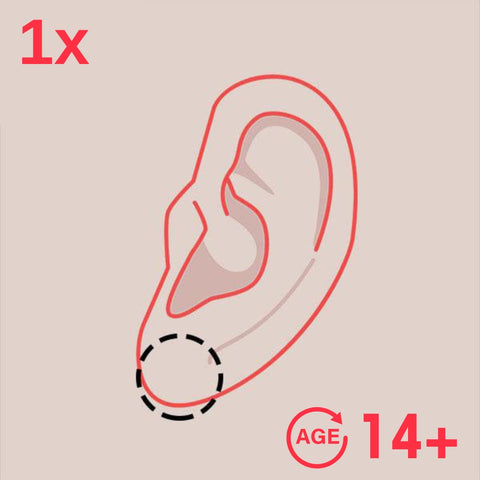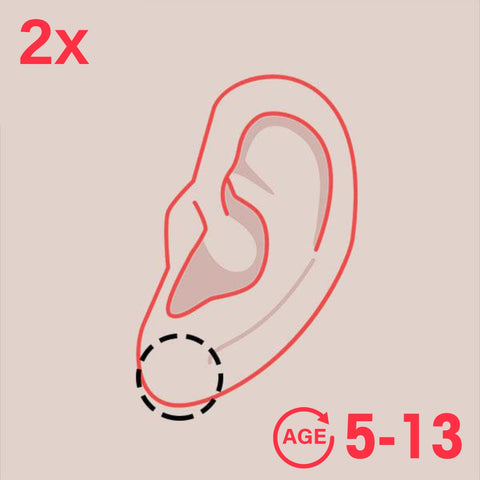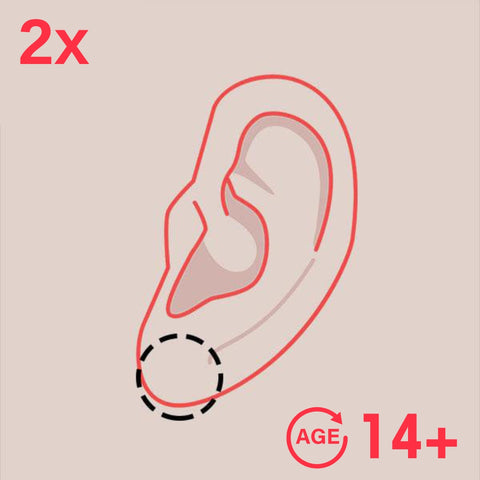Piercing Jewellery Types & Selection
A cool piercing is only a part of the equation. To get the most out of any piercing, you need to match it with the right jewellery. Your jewellery completes your look. It can be an accent to your style, or make a big impact - it all depends on what pieces you wear.
We make it our mission to provide Newmarket with the best piercing jewellery from the best brands. Our brand roster is known for their quality, safety and aesthetics, including names like:
- BVLA
- Maria Tash
- Le Roi
- Anatometal
- Industrial Strength
The Types of Piercing Jewellery
Before you go to get pierced it’s good to have an idea of what sort of jewellery you want. The options for piercing jewellery types are practically limitless. But we put together a list of the main categories of jewellery and their corresponding piercings.
- Rings
- Barbells
- Studs
- Plugs & Tunnels
Rings
Rings are the classic piercing jewellery. They’re such a longstanding part of piercing culture that most people call any ear jewellery an earring. Although rings have been around about as long ear piercings themselves, they continue to change. There are all sorts of ring types.
A versatile jewellery style, rings are often used for ear, nose, lip, eyebrow, and nipple piercings.
Captive Bead Rings
 Captive bead rings (CBR) are easily identifiable. The ring itself has a gap between either end, and a bead fills the gap to complete the circle. For this reason, another name for it is a ball closure ring. The bead, or ball, appears to float in place.
Captive bead rings (CBR) are easily identifiable. The ring itself has a gap between either end, and a bead fills the gap to complete the circle. For this reason, another name for it is a ball closure ring. The bead, or ball, appears to float in place.
Seamless Rings
A seamless ring is a ring designed to give the appearance of being a complete circle. Instead of being closed with a bead, like CBRs, the ends fit together. They’re taken on and off by twisting the ends away from each other to create an opening.
Segment Rings
Segment rings basically a cross between CBR and seamless. They have a seamless appearance but operate like a captive bead ring. Instead of a bead, there is a segment of the ring pops out to insert or remove the jewellery.
Clicker Rings
Named for the distinct “click” they make opening and closing, clicker rings are another popular CBR alternative. They close off with a hinged piece that is permanently affixed to one end of the ring. The benefits of clicker rings include easy insertion/removal and that there is no extra piece to be lost.
Circular Barbells
 Circular barbells, sometimes called horseshoe barbells, are a ring that doesn’t quite make a complete circle. There is a permanently affixed bead or decoration at one end of the ring. A bead or decoration screws into the other signs to close off the barbell. The piece is more secure than a captive bead ring.
Circular barbells, sometimes called horseshoe barbells, are a ring that doesn’t quite make a complete circle. There is a permanently affixed bead or decoration at one end of the ring. A bead or decoration screws into the other signs to close off the barbell. The piece is more secure than a captive bead ring.
Barbells
Not just for weightlifters, barbells are a popular category of piercing jewellery. They consist of a bar and a bead or decoration at each end. Generally, one bead is permanently held in place and the other is removable to allow insertion/removal of the jewellery. They can be decorative or simple jewellery.
Barbells are commonly used for ear, tongue, nose, lip, nipple, navel, and eyebrow piercings. For tongue piercings, they are widely considered the only safe type of jewellery.
Straight Barbell
 Straight barbells are simple in design. The bar is straight, commonly seen in industrial piercings, as well as tongue and nipple piercings.
Straight barbells are simple in design. The bar is straight, commonly seen in industrial piercings, as well as tongue and nipple piercings.
Curved or Bent Barbell
Curved or bent barbells have a little more to their shape. They come in a variety of curvatures, from semi-circles to 90° angles. There are also more dynamic variations like twisted and spiral barbells. Eyebrow piercings often use micro bent barbells which are the same, but smaller.

Belly Button/Navel Rings
Also called navel bars, belly button rings are essentially curved barbells that have the lower ball end larger, and often more decorative than the top. A reverse belly button ring has the larger end at the top instead.

A popular navel ring variant is dangle belly button rings. These have an added jewellery piece that hangs, or dangles, from the bottom of the piece. Danglers are also common in ear and nipple piercings.
Studs
Studs are a simple piece of jewellery that works well with other jewellery or on its own. They consist of a ball, a bar, and a backing. The bar is usually permanently fixed to the bead but is sometimes attached to the backing instead. The bar is hidden within the piercing, giving the ball the appearance of floating on the skin.
Another decoration, such as a diamonds or a shape, may be used instead of a ball. Studs are commonly used as the initial jewellery piece in a new tattoo. The short bar moves less, reducing the likelihood of irritation on a fresh piercing. As well, studs don’t catch easily on clothing or hair. Once the piercing fully heals the stud can be kept in or switched for another type of jewellery.
Studs are common for nose and ear piercing jewellery. Other facial piercings on the lower lip use labret studs.
Labret Studs
Labret studs are designed for labrum piercings. This includes lip piercings like snakebites and spiderbites. Labret studs have the bar permanently attached to the flat backing that sits against the skin. The ball screws into the bar.
The labrum is the area below the lip and above the chin. Although labret studs are designed for this area, they also allow for other piercings such as ear cartilage and nostril piercings.
Plugs & Tunnels: Piercing Stretching Jewellery
Plugs and flesh tunnels are larger gauge jewellery that stretch the piercing. Stretching is done gradually to safely fit larger and larger jewellery. Plugs are a solid circular piece that fits inside the piercing. A flesh tunnel is similar, except that the middle is hollow, so you can see right through to the other side of the piercing.
The most common use of plugs and tunnels is in earlobe piercings. Nipple and genital piercings are also pretty easy to stretch, but lightweight jewellery is usually recommended for them.
Ear cartilage is a little riskier to stretch and requires a slow approach. Tongue stretching is growing in popularity but can be uncomfortable, most just choose to get a larger gauge piercing to start.
Getting Piercings & Jewellery in one Location
So long as you shop at a trustworthy source, buying jewellery online is a great way to find cool and unique jewellery. But for a new piercing, it’s best to buy jewellery at the same place you get the piercing.
Piercers are often hesitant to use an outside piece of jewellery for a fresh piercing. This isn’t because they want to make a sale, but because they can’t be certain about the safety of other jewellery. A reputable piercing shop carries hypoallergenic jewellery made of high-quality gold or surgical-grade titanium.
Other metals are impure and contain nickel. Nickel is irritating to the skin, especially in a fresh piercing. Using impure metals for a new piercing increases your odds of infection or rejection. This is bad for your health and your piercers professional reputation.
If you know what type of jewellery you may want to switch to after your piercing heals, let your piercer know. They can give you an idea of how long you should wait and what the best options are. As well, they may recommend different placements or gauges for the initial piercing.
The artists in our Newmarket piercing shop are knowledgeable about both body piercings and jewellery. They’re happy to answer any questions you have, come in for a visit!
Piercing Studios Near You
Mississauga
Square One Shopping Centre
100 City Centre Drive, Mississauga,
ON L5B 2C9
Phone
+1 (905) 232 -7226
Need an Experienced Piercer in Mississauga?
Working with an experienced piercer can make all the difference when it comes to your piercing experience. If you’re in the Mississauga, Ontario area and have any questions about ear piercing, body piercing or jewelry, give us a call or stop by our piercings studio today. We’d love to help walk you through what to expect and help you choose the right option.



